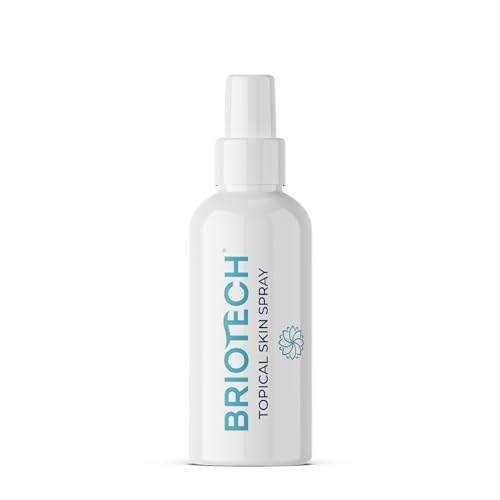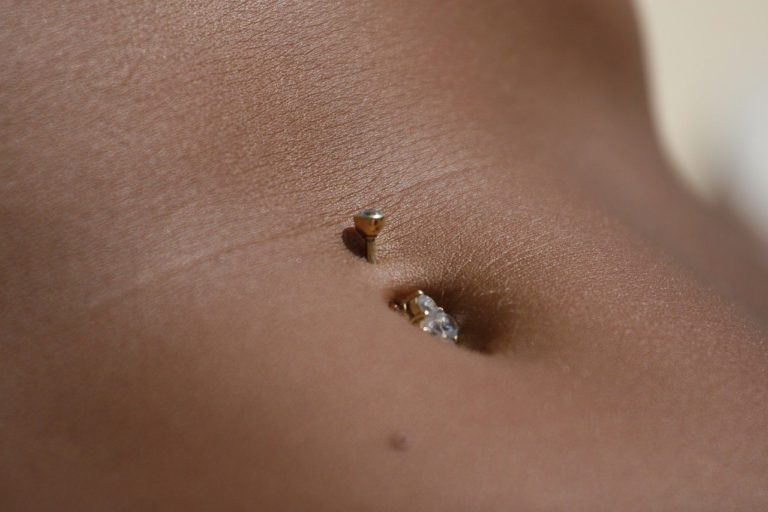A belly button piercing involves inserting a ring or an ornament through one’s skin around the belly. While the piercing itself takes only a few minutes at most, the healing process after needs a lot of time.
During this period, it is normal for the belly button to bleed. In fact, almost everyone who opts for navel piercing does experience bleeding, discomfort, and bruising after the process. It is typical for bleeding to occur after a brand-new piercing for the first few days and even weeks.
The only time you need to be alarmed is when you are bleeding excessively, more than the piercing artist warned would happen. In case you find a lot of dried blood on the days following your piercing, it is best to contact your piercer immediately and seek their help.
It is important to note that during the healing process, a normal occurrence is the formation of a yellowish or white crust around or behind your jewelry piece. This crust is typically the cells that helped your piercing heal by forming a layer of scab around it.
Therefore, don’t panic when you find a scab. It doesn’t mean that your piercing isn’t healing or that you’re suffering from an infection. Seeing a scab is a good sign because you know that the piercing has started healing. The healing begins on the outside first, and then the inside heals gradually. However, during this time, if you deliberately or unintentionally try to twist your jewelry or fiddle with it in any way, you may reactivate the bleeding.
What do you do if Your Belly Button Piercing is bleeding?

As we mentioned above, a bit of bleeding is nothing to feel anxious about. All you have to do is follow your piercer’s aftercare instructions very thoroughly. This typically includes rinsing with saline water or using a bar of antibacterial soap and not touching the piercing.
In case you find that the bleeding is escalating at any time, ice your piercing until the bleeding stops. However, if these procedures do not stop the bleeding, you may need medical help.
You must either contact your piercer right away or see a doctor get immediate treatment.
Bleeding is only an issue when you feel that it is becoming an infection. Certain other symptoms could suggest your piercing is suffering from an infection, such as yellow/green discharge and perhaps some odor from the pierced area too.
In most cases, a doctor will prescribe an antibiotic or two to heal the infection. In severe cases, you may have to let your piercing go to heal.
If You are Interested:
✔️ This is the most popular Piercing Aftercare spray according to our readers.
How do you know if Your Belly Button is rejecting the piercing?
The very first fact to acknowledge is that nature has equipped your body with self-defense. Every minute of your life, your body is at work to protect you from unknown hazards. Your immunity kicks into gear when it encounters a danger, something detrimental to health due to this natural mechanism.
It will help you heal and recover quickly. With this thought, your body will also send you signals when it is unable to accept a foreign object that might harm its well being. Hence, it would be best if you kept an eye out for certain symptoms during your navel piercing.
If your jewelry piece is like a threatening invader for your body, it will reject your piercing in the following ways:
- You notice your jewelry hanging or drooping differently
- The exit and entry holes of your piercing expand in size
- You note the tissue amount between your entry and exit hole, reducing or thinning. At the very least, you must have a quarter of the tissue amount between the holes.
- You find the jewelry shifting from its place visibly.
- The skin around your piercing may also indicate signs of rejection, such as:
- The skin becoming almost transparent, so much so that you can see the jewelry piece through the skin
- Unusually hard or calloused skin
- Inflammation or redness
- Peeling
- Flaky skin
It is interesting to note that piercing rejection has no time-limitation. Your body may reject a belly button piercing a few weeks later, but it can do the same a few months or even years and decades later. Sometimes a new piercing settles well initially, but with time, the body refuses to live with the foreign intrusion in it.
It can also happen that an accidental bump may strangely disturb your old piercing, thereby giving way to infection and kicking your immune system into overdrive. In such an event, you will like to see symptoms of piercing rejection and migration.
How can I make My Belly Piercing Heal Faster?
Belly button piercings generally require one year for healing, sometimes even more. This is not a surprising fact, considering how sensitive navels are. However, if you take thorough care of the piercing, you can make the healing proceed faster and more painlessly.
For starters, thorough cleaning and regular care will ensure the navel remains safe from infection and irritation. In case you suffer from both of these after the piercing, your healing period will prolong and may take a turn for the worse too.
Keeping this in mind, you must develop a sound cleaning regimen immediately after the piercing speeds up recovery and allows the piercing to fare better. For a faster recovery, here are a few things you can do:
- We understand your excitement to flash your new diamond stud as soon as your belly button is wearing it, but it is best to take it easy the first few days. Hence, you must wear loose and baggy clothes that do allow your belly piercing breathing space. The fabric must also not rub against or entangle in the new piercing. With more room for oxygen, the piercing will not feel irritated or disturbed and heal quickly. Also, for better protection, you can buy a vented eye patch from a chemist. This will secure the navel piercing from snagging on your outfit and not cutting oxygen supply.
- Remember to wash the piercing with a saline wash daily. It will kill the bacteria so that no infection may develop. You can prepare a saline solution using eight ounces of warm water and dissolving a tablespoon of table salt or ¼ tsp of sea salt for it.
- Body cleanliness is equally important during the healing process. You may take things for granted, but it is necessary to be extra cautious after your piercing. Hence, opt for showers instead of baths post piercing, change your bed linens frequently, and scrub your hands well with antibacterial soap and warm water before you touch your piercing.
- Be vigilant. Nothing can harm your piercing more than infection as a result of neglect and carelessness. Keep an on your belly button daily and look for a sign of irritation, redness, or swelling. Also, a yellowish or white discharge is common after piercing, but if the discharge continues past a week or the color is different and other symptoms, you must immediately seek medical help.
- In case of any uncommon occurrences or symptoms, you should contact your piercer immediately.








Is it Normal for a Belly Ring to bleed after a Year?

The skin of our stomachs is pretty thick. When you opt for a belly piercing, you must note that the piercing will run pretty deep. As a result, the healing process takes very long, mostly a year, and even more.
It is also important to note that the healing pattern begins from the surface and then continues inward, so that is time-consuming. If you note the outside or the surface looking a hundred percent healed, it is wrong to assume the inside has too.
The healing of the navel from inside takes a long because part of it includes the creation of new blood vessels.
By extra blood vessels here, we mean a lot more than your normal tissue has otherwise. Hence, after your piercing has healed, your body will automatically remove some of the extra blood vessels.
With all this happening, it is often possible for some bleeding to occur even a year later. At times, you may also unknowingly disturb the piercing, perhaps while scrubbing yourself during a bath or your fabric entangling in the ring.
Such occurrences too can disturb your tender, unhealed skin inside the navel and cause bleeding.
You may pass this off as a normal thing and treat it with ice or saline solution in most cases. However, if you note excessive bleeding with other symptoms, you must see a doctor right away a year or so later.
Final Thoughts
Belly button piercings have been the trendiest form of body adornment for years now. It’s an art of self-expression, and hardly anyone can deny the attraction of a cute stud sparkling from that very sexy body area.
However, the healing process of navel piercings can take a while, sometimes even a year, considering how our navels are particularly sensitive from the inside. With thorough care and regular cleaning, you can ensure your body not only accepts the piercing but also heals well soon.

